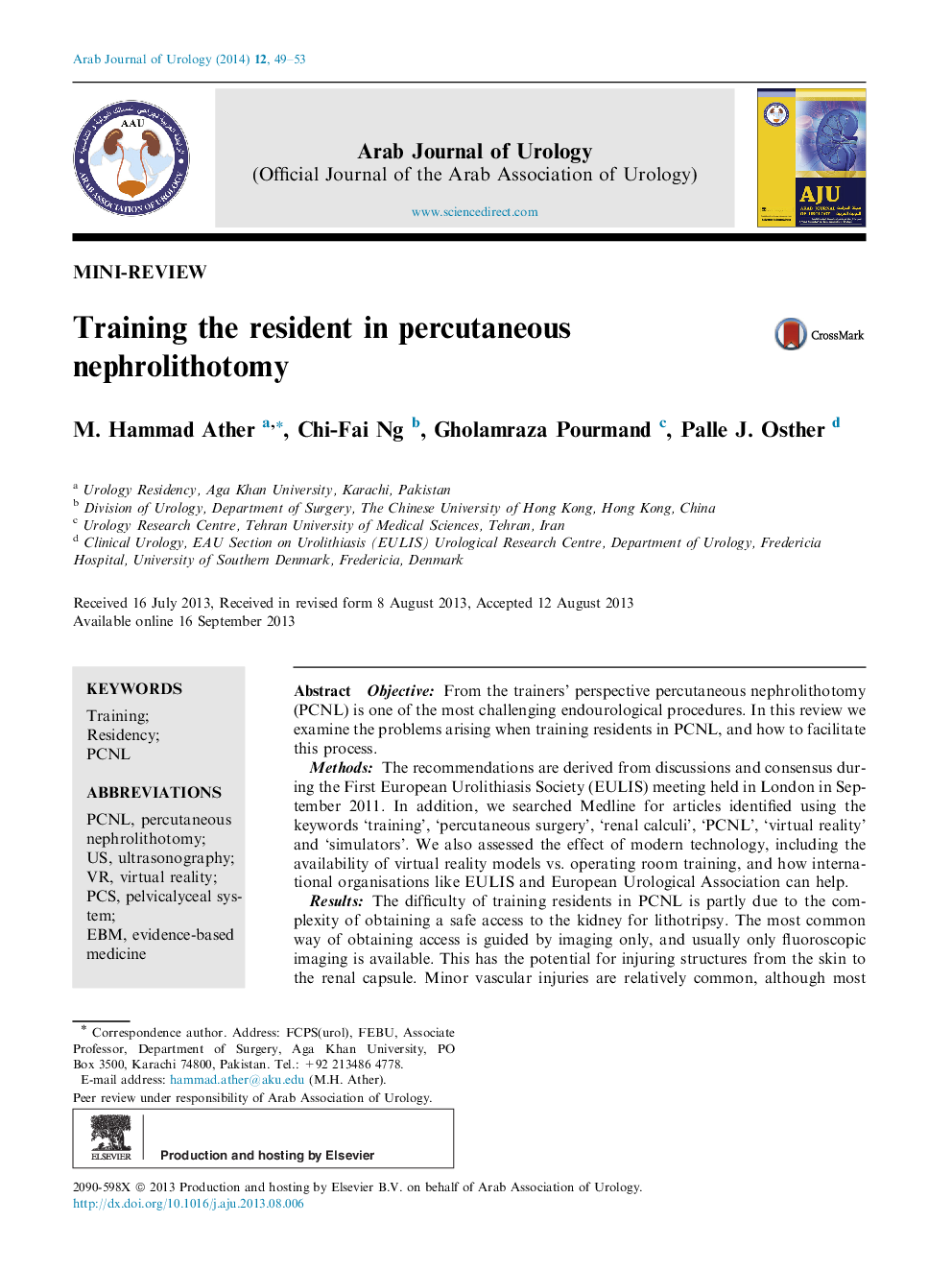| کد مقاله | کد نشریه | سال انتشار | مقاله انگلیسی | نسخه تمام متن |
|---|---|---|---|---|
| 4267981 | 1610739 | 2014 | 5 صفحه PDF | دانلود رایگان |
ObjectiveFrom the trainers’ perspective percutaneous nephrolithotomy (PCNL) is one of the most challenging endourological procedures. In this review we examine the problems arising when training residents in PCNL, and how to facilitate this process.MethodsThe recommendations are derived from discussions and consensus during the First European Urolithiasis Society (EULIS) meeting held in London in September 2011. In addition, we searched Medline for articles identified using the keywords ‘training’, ‘percutaneous surgery’, ‘renal calculi’, ‘PCNL’, ‘virtual reality’ and ‘simulators’. We also assessed the effect of modern technology, including the availability of virtual reality models vs. operating room training, and how international organisations like EULIS and European Urological Association can help.ResultsThe difficulty of training residents in PCNL is partly due to the complexity of obtaining a safe access to the kidney for lithotripsy. The most common way of obtaining access is guided by imaging only, and usually only fluoroscopic imaging is available. This has the potential for injuring structures from the skin to the renal capsule. Minor vascular injuries are relatively common, although most are self-limiting. Visceral injuries that are particularly important are pleural and less commonly colonic injuries, but they are more complex and often require additional procedures.ConclusionsTeaching the skills is more challenging than performing PCNL. In most urological training programmes it is difficult to incorporate teaching and training skills when performing PCNL. To train an academic stone doctor, proficiency in the safe conduct of PCNL is mandatory.
Journal: Arab Journal of Urology - Volume 12, Issue 1, March 2014, Pages 49–53
